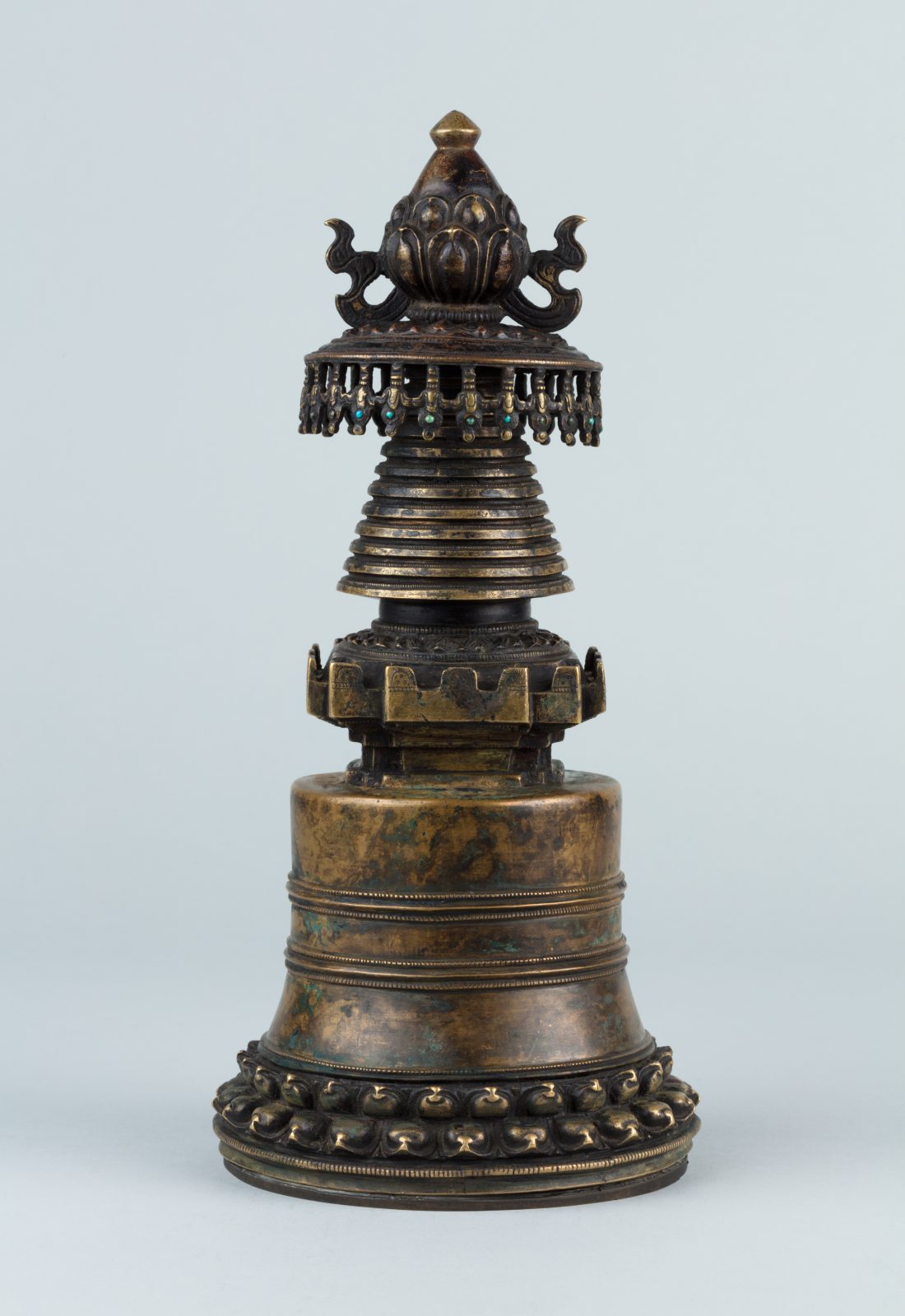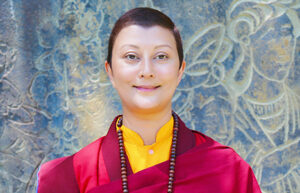

This week’s meditation session is led by Lama Aria Drolma and the theme is Openness. The guided meditation begins at 12:10.

Stupa; Tibet; 13th-14th century; Copper alloy; Rubin Museum of Himalayan Art; C2003.21.1
The stupa is a symbol found across all Buddhist traditions. It originated in India as a mound made to hold sacred remains, like those of the historical Buddha Shakyamuni. Stupas may also include objects associated with that person, such as clothes, as well as sacred texts, articles of worship, and figures made of clay and the ashes of the deceased (tsatsa). While a statue or painting of a buddha represents the divine body of an enlightened being and a book symbolizes divine speech, a stupa represents the mind of supreme spiritual awakening and is thus a symbol of buddhahood.

Lama Aria Drolma is an ordained Buddhist teacher in the Karma Kagyu tradition of Tibetan Buddhism, who has completed over a decade of monastic study and meditation training. She is a graduate of the traditional Tibetan Buddhist retreat program spanning three years and three months, an advanced cloistered meditation training program at Palpung Thubten Choling Monastery, New York.
Lama teaches worldwide, leading retreats, workshops, and corporate meditation programs and is a popular guest speaker at universities and organizations. She emphasizes Vajrayana Buddhism and Buddhist principles, making them relevant in our everyday lives, helping us to cultivate loving kindness and compassion, and bringing about a transformation of contentment and a genuine sense of well-being.
Get the latest news and stories from the Rubin, plus occasional information on how to support our work.